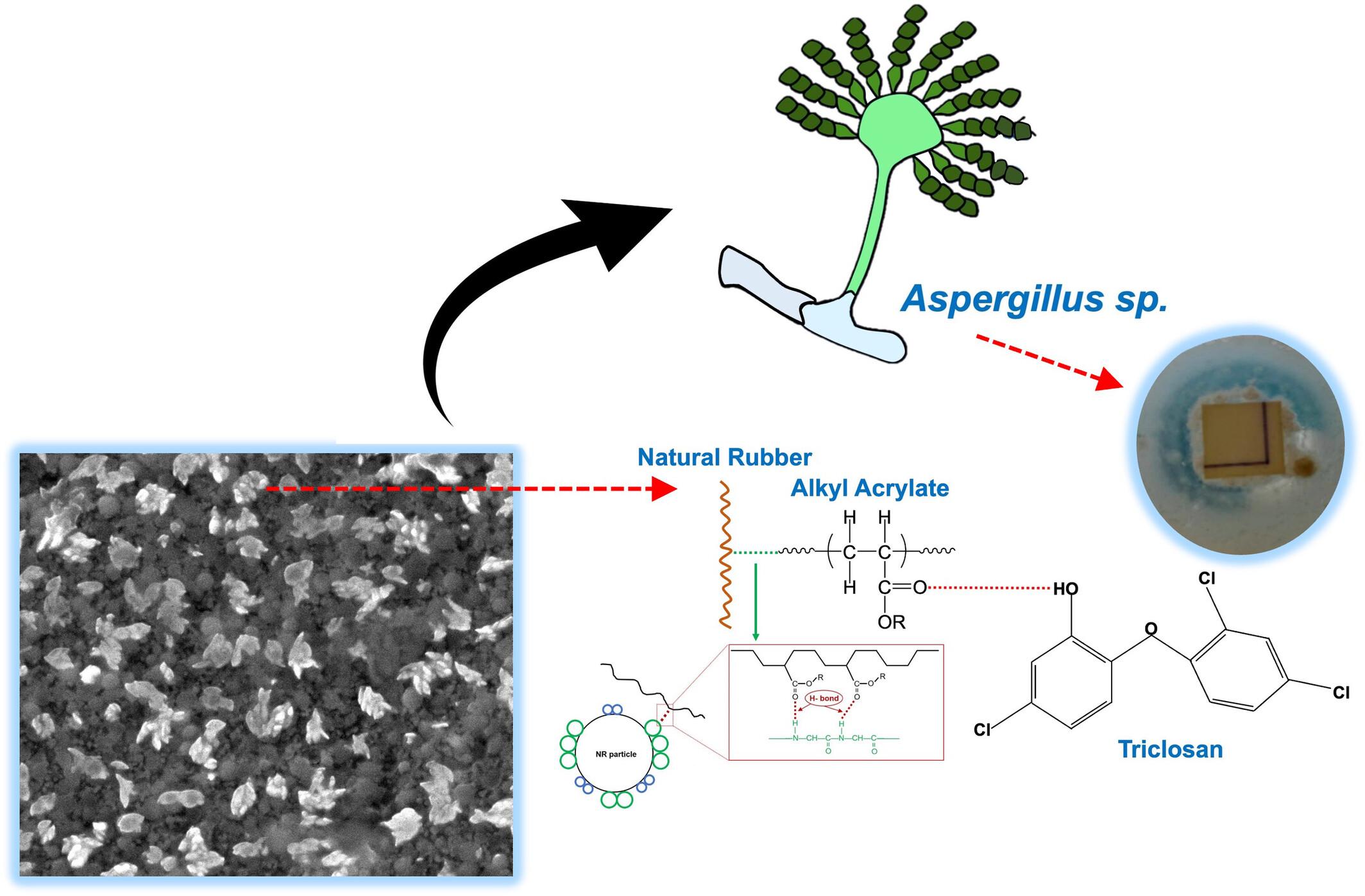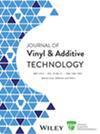A flower-like morphology in natural rubber latex film binder: Mechanical and antifungal characteristics
Abstract
Latex paint is a water-based paint that uses synthetic polymers as a binder. It is widely used for outdoor environments. This has brought fungal growth due to the combination of moisture, organic matter, and environmental conditions. This study proposed a feasibility study on preparing antifungal latex binders based on natural rubber (NR) latex and acrylic emulsion (AE) blends. It started with latex film preparation before applying it as a latex binder. They were prepared with various levels of the antifungal agent, namely triclosan, in the blends. Results exhibited a very unique morphology when imaging through a scanning electron microscope (SEM). A flower-like morphology was seen after adding triclosan to the latex films. The prepared films were further characterized in terms of thermomechanical responses to dynamic mechanical analysis (DMA) and temperature scanning stress relaxation (TSSR). In DMA, there were no significant changes in the glass transition temperatures (Tg) of NR and AE. However, there were obvious changes in the magnitude of the loss tangent (tan δ) over the temperature ranges from −50 to −30 °C and from 70 to 100 °C, where the loss tangent fluctuated due to triclosan. Moreover, triclosan also influenced the antifungal activity of the samples in a dose-dependent manner: the antifungal efficiency increased with the additional level of triclosan. Triclosan is classified as a phenolic antimicrobial agent. Even though triclosan is chemically non-polar, its structure depends on the environment making it adapt to polarity. Therefore, triclosan may penetrate through the cell membrane and inhibit the growth of spores. The overall results supported the feasibility study on the preparation of antifungal latex binders with good mechanical performance.
Highlights
- This study prepared latex compounds with good antifungal performance.
- A novel flower-like morphology in natural rubber latex was surprisingly observed.
- Triclosan kills fungi by disrupting the cell wall and interfering with the lipid components.
- Triclosan provides various polarity conditions by rotating its ether bond.
- The polarity of Triclosan increased over the bond rotation from 30 to 90 °.





 求助内容:
求助内容: 应助结果提醒方式:
应助结果提醒方式:


